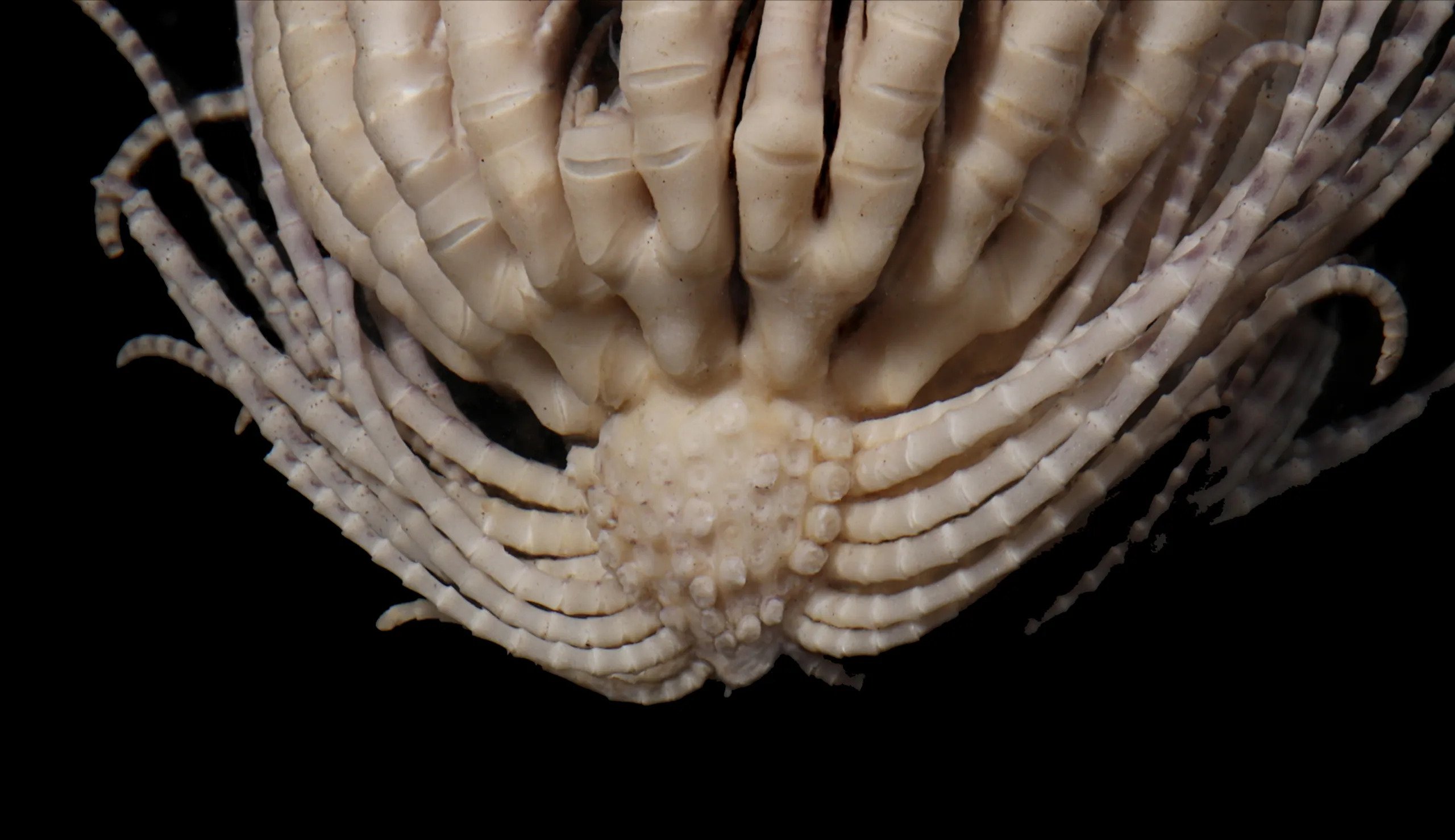Waters of Antarctica Uncover Rare Deep-Sea Creatures With Stunning Adaptations
Waters of Antarctica have once again proven to be a frontier of scientific discovery, revealing life forms that challenge our understanding of marine biology. At depths ranging from 200 to 1,170 meters below the icy surface, researchers have discovered a marine creature that appears as though it belongs in a science fiction film: the Antarctic feather star. This unusual relative of the starfish displays remarkable features, including individuals with up to 20 arms a morphology never recorded before.

The Antarctic feather star thrives in an environment defined by extreme pressure, near-total darkness, and sub-zero temperatures. Its unique structure allows it to navigate and capture food efficiently despite the harsh conditions. Scientists believe that these adaptations demonstrate how life can flourish in places once thought inhospitable, expanding our understanding of biodiversity in the planet’s most remote regions.
Waters of Antarctica Harbor Unknown Species Thriving in Extreme Depths
The discovery was made during an extensive marine expedition aimed at cataloging deep-sea species in the Southern Ocean. Using advanced submersibles and remote-operated vehicles equipped with high-resolution cameras, researchers were able to observe these creatures in their natural habitat. The Antarctic feather star, with its many flexible arms, uses them for both movement and feeding, capturing microscopic plankton drifting in the water.
Experts note that the morphology of these feather stars is unique even among echinoderms. While most starfish and feather stars possess between five and ten arms, finding individuals with up to 20 arms represents an extreme form of adaptation. This discovery emphasizes that the deep-sea environment, particularly in polar regions, continues to harbor species that remain entirely unknown to science.
Beyond the Antarctic feather star, the waters of Antarctica have yielded other surprising marine life forms. Researchers have identified several species of deep-sea sponges and bioluminescent organisms, all of which demonstrate specialized adaptations for survival under extreme environmental conditions. Some of these organisms can withstand immense pressure, while others utilize light in the absence of sunlight to communicate or attract prey. Also Read: Principal Punishment Sparks Outrage After Child Assault in Haryana
Waters of Antarctica Exploration Shows Marine Life Beyond Imagination
The study of these deep-sea ecosystems is crucial for understanding how life persists in extreme conditions. It also provides insight into the evolutionary mechanisms that allow species to develop extraordinary physical traits. As climate change and human activity increasingly impact polar regions, documenting and understanding these ecosystems becomes even more critical.
Marine biologists believe that the discovery of creatures like the Antarctic feather star could have broader implications for science. The unique physiology of these animals may inspire innovations in robotics, underwater exploration, and materials science. For instance, the flexible yet strong structure of the feather star’s arms could inform the design of underwater equipment that needs to withstand harsh environments.
The exploration of the waters of Antarctica continues to reveal that much of the ocean remains unexplored. Despite decades of oceanographic research, these deep and remote regions continue to produce surprises that challenge existing scientific knowledge. Each new species discovered serves as a reminder of the vast diversity and resilience of life on Earth, even in the most extreme conditions.
View this post on Instagram
Conclusion:
The waters of Antarctica are proving to be one of the planet’s most extraordinary natural laboratories. The discovery of the Antarctic feather star and other deep-sea organisms underscores the richness of marine life and the importance of ongoing exploration. These findings not only expand scientific knowledge but also inspire curiosity about what other secrets lie hidden beneath the icy depths.

